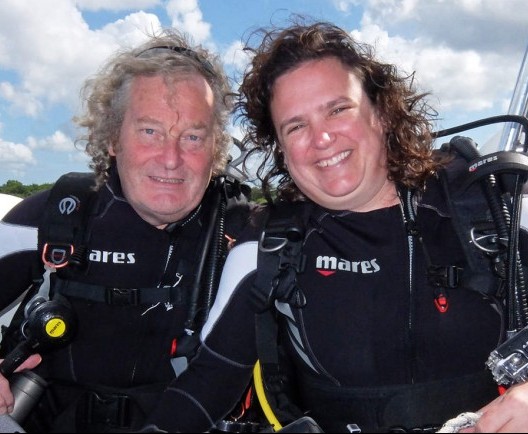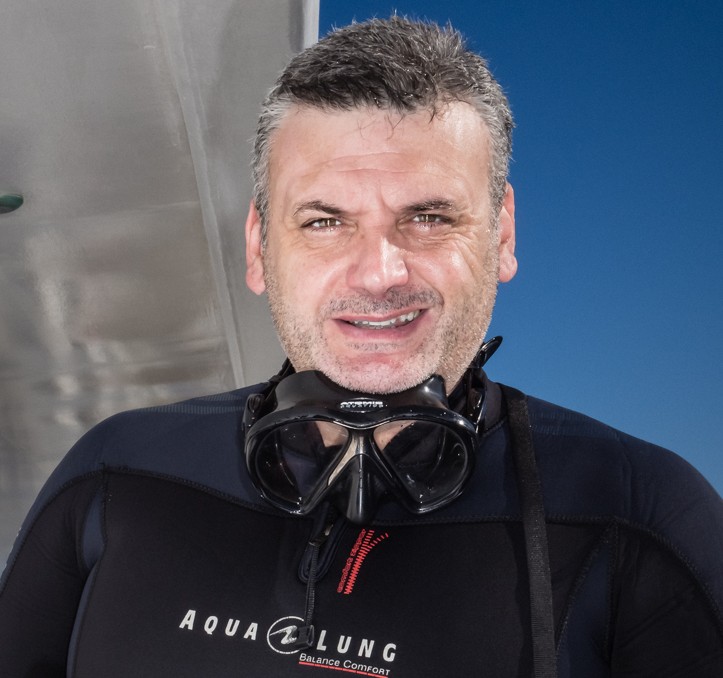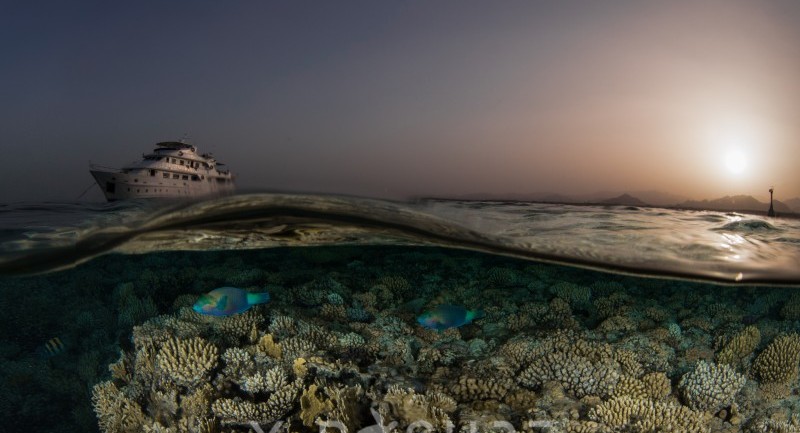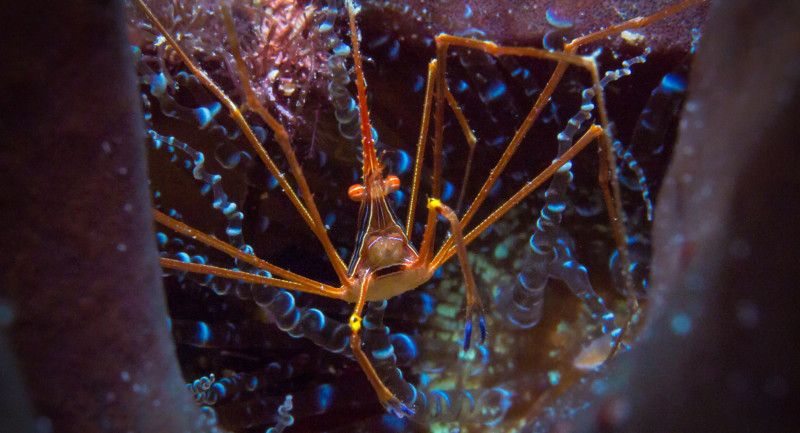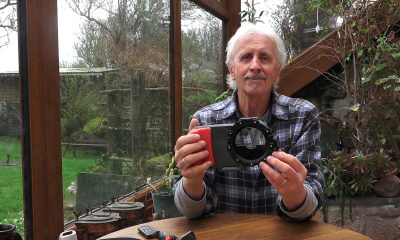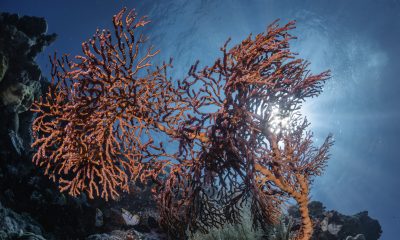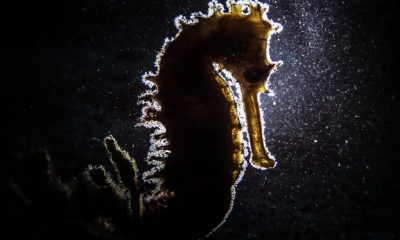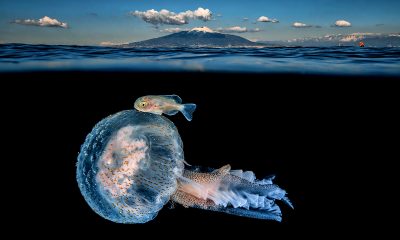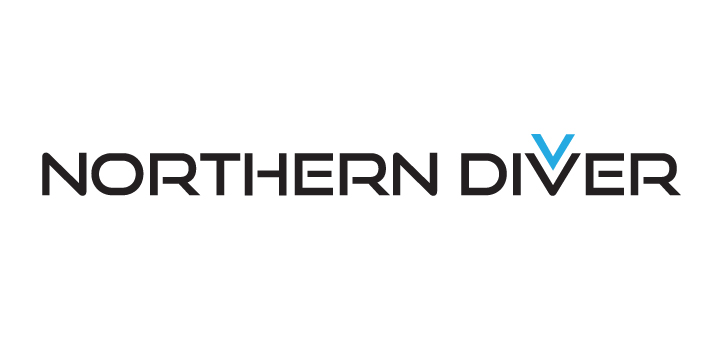News
Announcing the Winner of Scubaverse.com’s Photo of the Year 2016
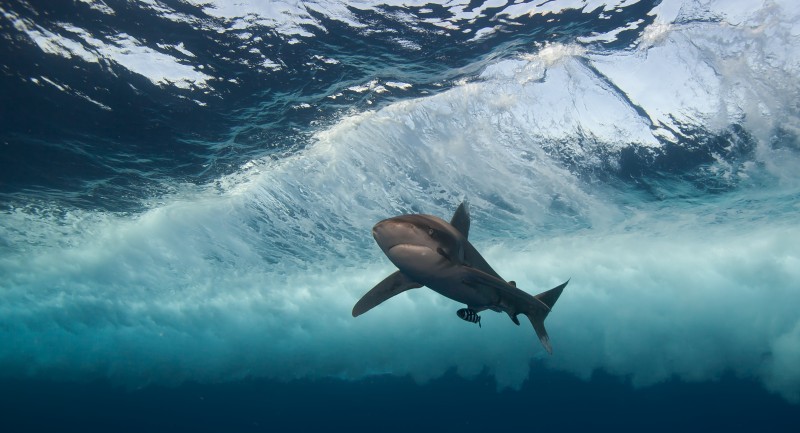
Winner Chosen by our panel of experts:
Winner: Wave Maker by Ahmed Helal
Nick, Caroline and guest judge Duxy got together and picked their favourites from the 12 monthly winners from 2016. It was not an easy task, with some great shots both in macro and wide angle. Having narrowed the field down to just a handful, we then had to pick our top three, and put them in order to find our 2016 champion.
Here are each of our top three photos put in order and with comments on each:
First Place: Wave Maker by Ahmed Helal
Nick’s comments:
The winning shot, which was pretty unanimous, is the oceanic white tip cruising beneath the surface. The way Ahmed has captured the shark as if it’s bursting out of the wake makes this a lovely action shot. There is plenty of space in front of the shark for it to move into and the balanced lighting, with the artificial light hitting the underside of the shark has been, for me, perfectly executed.
Caroline’s comments:
I loved this shot the first time I saw it in the April competition. I knew it was going to be up there amongst the best of the year. An engaging subject with a wonderful background, created by a passing RIB, really brings this shot to life.
Duxy’s comments:
I’ve seen a lot of shark pictures this year but this is definitely at the top end of the list. What separates it from the rest is the great background, with the bow wave slicing a perfect diagonal through the waves, and a subtly lit shark just big enough in the frame not to overpower it.
Second Place: Red Sea Sunset by Christian Llewellyn
Nick’s Comments:
Christian’s split shot in the red Sea is one of the best I have seen. The natural, sunset light on the mountains and the boat are wonderful and you can see the depth in the mountains with the changing shades of their shapes. The light is balanced beautifully between above the surface and below, and the way it has picked out the parrotfish beneath the surface just adds to the overall effect. If ever an image encapsulates what is Egypt for a diver, then this has to be it.
Caroline’s comments:
This is not an easy shot to create. The composition and lighting are great, with the Red Sea boat and shoreline in the background, the sun setting and to light up the reef and a couple of parrotfish is a tough ask that has been very well executed. It makes me want to rush back out to Egypt right now to have a go at shooting this split shot myself.
Duxy’s comments:
Chris’ split is perfectly executed, which is a tricky technical feat, as the timing of the sunset, position of the boat, and lit up reef brings the trio of compositional elements together really well.
Third Place: Arrowcrab in Spiral Coral by Joel Warburton
Nick’s comments:
Joel’s arrow head crab is a wonderful piece of macro photography. In the first place it has been framed, with just enough light so that it doesn’t dominate the image. Both its eyes are staring straight at the camera and all the main parts of the critter are perfectly focused. Generally I would find things like the curly bits in this image to be a distraction, but actually they enhance the image and if there was a separate prize for macro then this would be the winner.
Caroline’s comments:
The best macro shot of the year for sure. Great expression on this tiny crab’s face and the background is amazing. This is a shot that really catches the eye, but one that also makes you take your time and examine it further. It is a shot I keep coming back to, to look at over and over again.
Duxy’s comments:
Joel has pulled off the trick of achieving eye contact with the crab, and also using diagonals bringing us in and allowing us to connect visually with this crafty crustacean. Often macro shots can be seen as a bit lazy relying on the fact that we are looking at something amazing without even trying to up the game compositionally.
[hr style=”single”]
Congratulations from all of the Scubaverse team to our winner and runners-up. Thank you to everyone that entered in 2016. We hope to see plenty more of your images in 2017.
Ahmed will receive a wonderful prize of Mares diving equipment, as well as a voucher from Scuba Travel (full details of the prize can be found here).
For your chance to win the 2017 title, you simple need to enter your images each month here:
www.scubaverse.com/current-contest-photo
Good Luck!
[hr style=”single”]
Scubaverse.com would like to say a big thank you to Photo of the Year’s sponsors, Mares and Scuba Travel.
Blogs
Northern Red Sea Reefs and Wrecks Trip Report, Part 2: Wall to Wall Wrecks

Jake Davies boards Ghazala Explorer for an unforgettable Red Sea diving experience…
The second day’s diving was a day full of wreck diving at Abu Nuhas, which included the Chrisoula K, Carnatic, and Ghiannis D. The first dive of the day was onto the Chrisoula K, also known as the wreck of tiles. The 98m vessel remains largely intact where she was loaded with tiles which can be seen throughout the hold. The stern sits at 26m and the bow just below the surface. One of the highlights of the wreck is heading inside and seeing the workroom where the machinery used for cutting the tiles are perfectly intact. The bow provided some relaxing scenery as the bright sunlight highlighted the colours of the soft coral reef and the many reef fish.

Following breakfast, we then headed to the next wreck, which was the Carnatic. The Carnatic is an 89.9m sail steamer vessel that was built in Britain back in 1862. She ran aground on the reef back in 1869 and remains at 27m. At the time, she was carrying a range of items, including 40,000 sterling in gold. An impressive wreck where much of the superstructure remains, and the two large masts lay on the seafloor. The wooden ribs of the hull provide structures for lots of soft corals, and into the stern section, the light beams through, bouncing off the large shoals of glass fish that can be found using the structure as shelter from the larger predators that are found outside of the wreck.

The final wreck at Abu Nuhas was the Ghiannis D, originally called ‘Shoyo Maru,’ which was 99.5m long and built in Japan back in 1969 before becoming a Greek-registered cargo ship in 1980. The ship then ran aground on the reef on April 19th, 1983, and now sits at the bottom at a depth of 27m. Heading down the line, the stern of the ship remains in good condition compared to the rest of the hull. The highlight of the wreck, though, is heading into the stern section and down the flights of stairs to enter the engine room, which remains in good condition and is definitely worth exploring. After exploring the interior section of the ship, we then headed over to see the rest of the superstructure, where it’s particularly interesting to see the large table corals that have grown at the bow relatively quickly considering the date the ship sank. After surfacing and enjoying some afternoon snacks, we made sure everything was strapped down and secured as we would be heading north and crossing the Gulf of Suez, where the winds were still creating plenty of chop.

The next morning, it was a short hop to Ras Mohammed Nature Reserve for the next couple of days of diving. The 6am wake-up call came along with the briefing for the first site we would be diving, which was Shark & Yolanda. The low current conditions allowed us to start the dive at Anemone City, where we would drift along the steep, coral-filled wall. These dives involved drifts, as mooring in Ras Mohammed wasn’t allowed to protect the reefs. As a dive site, Shark & Yolanda is well-known and historically had a lot of sharks, but unfortunately not so many in recent years, especially not so early in the season. However, there was always a chance when looking out into the blue.

The gentle drift took us along the steep walls of the site, with plenty of anemone fish to be seen and a huge variety of corals. It wasn’t long into the dive before we were accompanied by a hawksbill turtle, who drifted with us between the two atolls before parting ways. Between the two reefs, the shallow patch with parts of coral heads surrounded by sand provided the chance to see a few blue-spotted stingrays that were mainly resting underneath the corals and are always a pleasure to see. With this being the morning dive, the early sunlight lit up the walls, providing tranquil moments. Looking out into the blue, there was very little to be seen, but a small shoal of batfish shimmering underneath the sunlight was a moment to capture as we watched them swim by as they watched us.

Towards the end of the dive, we stopped at the wreck of the Jolanda where the seafloor was scattered with toilets from the containers it was carrying. This provided a unique site to make a safety stop, which was also accompanied by a large barracuda slowly swimming by, along with a hawksbill turtle calmly swimming over the reef as the sun rays danced in the distance.
For the next dive, we headed north to the Strait of Tiran to explore the reefs situated between Tiran Island and Sharm El Sheik, which were named after the British divers who had found them. We started on Jackson before heading to Gordons Reef, where we also did the night dive. All the atolls at these sites provided stunning, bustling coral reefs close to the surface and steep walls to swim along, which always provided the opportunity to keep an eye out for some of the larger species that can be seen in the blue. Midwater around Jackson Reef was filled with red-toothed triggerfish and shoals of banner fish, which at times were so dense that you couldn’t see into the blue. Moments went by peacefully as we enjoyed the slow drift above the reef, watching these shoals swim around under the mid-afternoon sun.

The night dive at Gordon’s Reef was mainly among the stacks of corals surrounded by sand, which was great to explore under the darkness. After some time circling the corals, we came across what we were really hoping to find, and that was an octopus hunting on the reef. We spent the majority of the dive just watching it crawl among the reef, blending into its changing surroundings through changes in colour and skin texture. It’s always so fascinating and captivating to watch these incredibly intelligent animals, in awe of their ability to carry out these physical changes to perfectly blend into the reef. Before we knew it, it was time to head back to the boat to enjoy a well-deserved tasty dinner prepared by the talented chefs onboard.
Check in for the 3rd and final part of this series from Jake tomorrow!
To find out more about the Northern Red Sea reef and wrecks itineraries aboard Ghazala Explorer, or to book, contact Scuba Travel now:
Email: dive@scubatravel.com
Tel: +44 (0)1483 411590
Photos: Jake Davies / Avalon.Red
Marine Life & Conservation
Double Bubble for Basking Sharks

 The Shark Trust is excited to announce that, for two more days only, all donations, large or small, will be doubled in the Big Give Green Match Fund!
The Shark Trust is excited to announce that, for two more days only, all donations, large or small, will be doubled in the Big Give Green Match Fund!
Donate to Basking in Nature: Sighting Giants
The Shark Trust is hoping to raise £10k which will be doubled to £20k. This will go towards Basking in Nature: Sighting Giants. And they need YOUR help to reach they’re goal.
The Shark Trust’s citizen science project is to monitor and assess basking sharks through sightings; encouraging data collection, community engagement, and promoting nature accessibility. This initiative aims to enhance health and wellbeing by fostering a deeper connection with British Sharks.
Campaign Aims
- Increase citizen science reporting of Basking Sharks and other shark sightings to help inform shark and ray conservation.
- Provide educational talks about the diverse range of sharks and rays in British waters and accessible identification guides!
- Create engaging and fun information panels on how to ID the amazing sharks and rays we have on our doorstep! These can be used on coastal paths around the Southwest. With activities and information on how you can make a difference for sharks and rays!
- Promote mental wellbeing through increasing time in nature and discovering the wonders beneath the waves!
Donate, and double your impact. Click Here
-

 News3 months ago
News3 months agoHone your underwater photography skills with Alphamarine Photography at Red Sea Diving Safari in March
-

 News3 months ago
News3 months agoCapturing Critters in Lembeh Underwater Photography Workshop 2024: Event Roundup
-

 Marine Life & Conservation Blogs2 months ago
Marine Life & Conservation Blogs2 months agoCreature Feature: Swell Sharks
-

 Blogs2 months ago
Blogs2 months agoMurex Resorts: Passport to Paradise!
-

 Blogs2 months ago
Blogs2 months agoDiver Discovering Whale Skeletons Beneath Ice Judged World’s Best Underwater Photograph
-

 Gear Reviews2 months ago
Gear Reviews2 months agoGear Review: Oceanic+ Dive Housing for iPhone
-

 Marine Life & Conservation2 months ago
Marine Life & Conservation2 months agoSave the Manatee Club launches brand new webcams at Silver Springs State Park, Florida
-

 News3 months ago
News3 months agoWorld’s Best Underwater Photographers Unveil Breathtaking Images at World Shootout 2023


